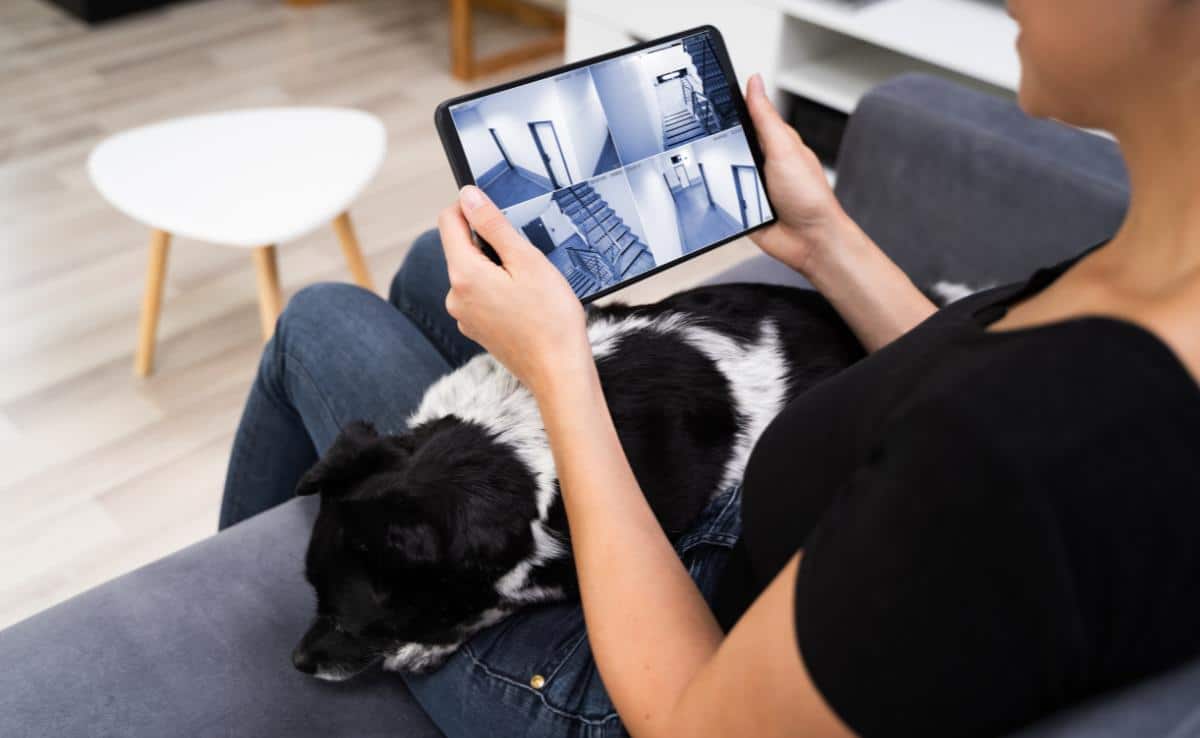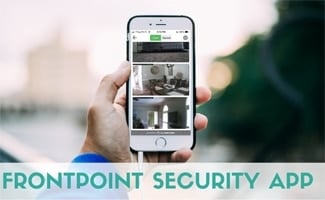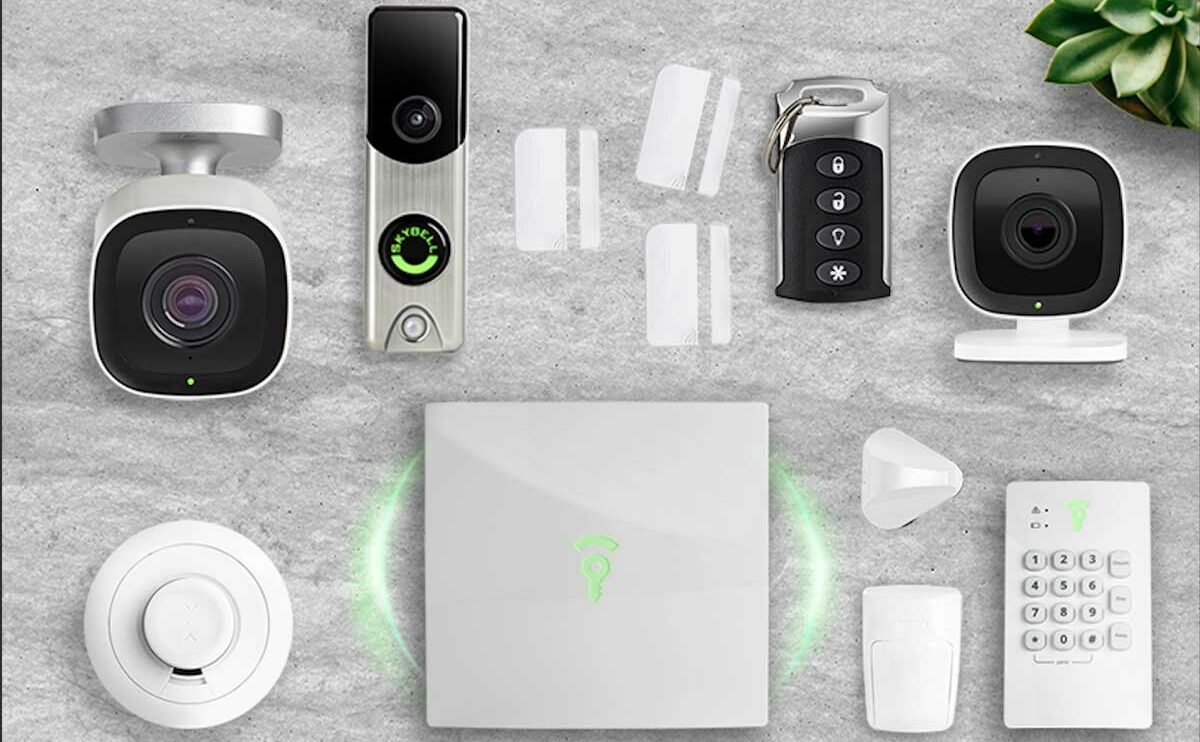Are Home Security Systems Still Worth It In 2024?
When you purchase through links on our site, we may earn a commission. Here’s how it works.
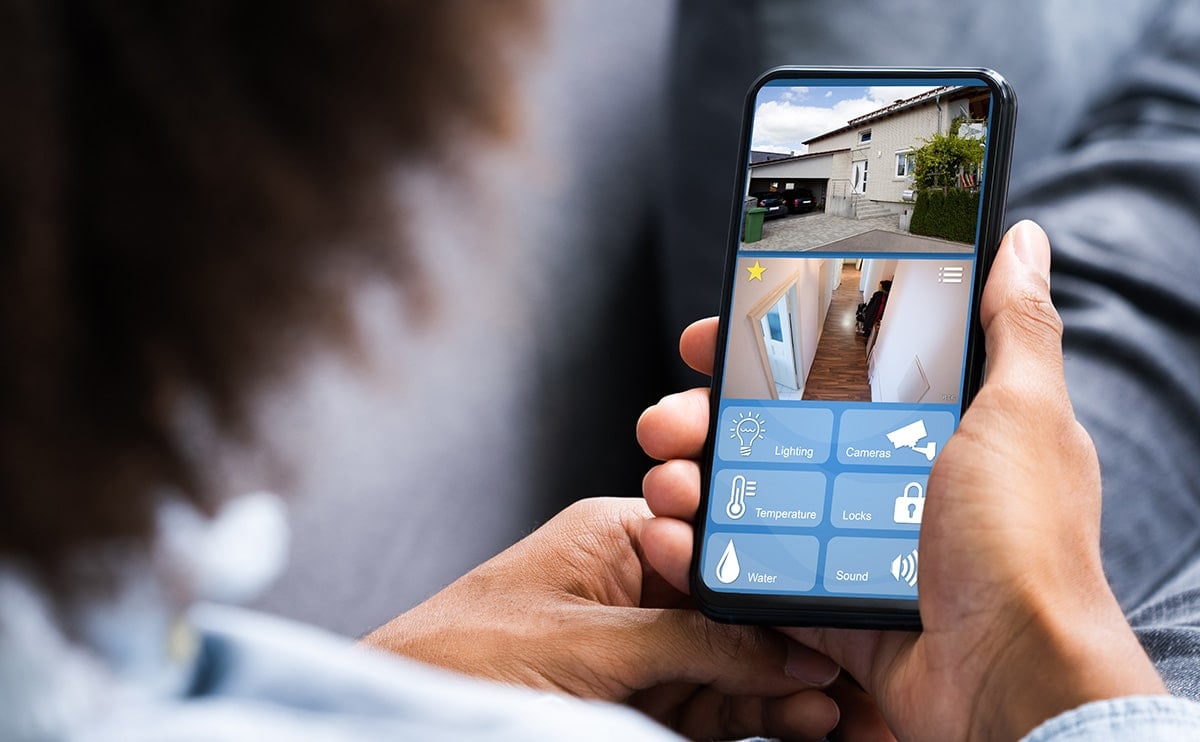
Recent decades have seen an incredible boom in the security technology available to residential homeowners, but are home security systems worth the investment? Home security systems are a great way to keep your family and property safe, but with all the equipment on the market, purchasing a home security system can be overwhelming and pricy.
Before making a decision, consider what you want from a home security system and what type would work best with your home. Read on to learn the basics of home security equipment and the benefits of owning a home security system.
What Are Home Security Systems?
Home security systems protect your home and property against burglaries and theft. A basic home security system typically includes entry sensors, motion sensors, security cameras, and a base station. Some security systems offer environmental sensors that warn you of floods, fires, carbon monoxide, poor air quality, temperature changes, and more. Others have panic buttons or medical alert wearables—for falls and other health emergencies.
How Do Home Security Systems Work?
A home security system provides the technology needed to monitor your home, no matter where you are currently located. While starter security systems may include only the basics, equipment options are vast. Most major home security companies offer opportunities for self-monitoring and professional 24/7 monitoring. Those curious about smart home technology will be happy to know that many security systems include home automation features.
Read our expert guide to home security equipment and smart home technology for a full breakdown.
Equipment
Today, companies sell tons of equipment for home safety. Familiarizing yourself with the components of home security systems can help you decide if it’s worth your money. You’re likely familiar with some equipment, like security cameras, but some options are more unique. Let’s go over the components available for your specific home security needs.
Base Station
Think of your base station as the brains of your security system. Also called a smart hub, the base station connects all your devices—door and window sensors, motion detectors, and more—allowing you real-time notifications when a security risk is detected. How does it work? First, connect your base station via Wi-Fi, Ethernet, or cellular connection. A base station then communicates with your home security’s sensors and will know when any sensors are triggered. The base station will then relay this information to you via mobile app notifications, a 24/7 professional monitoring service, or both.
Base stations come in various sizes and designs, including touch-screen panels. Some base stations come equipped with a keypad, while others include a separate keypad. Base stations provide a wide range of functionality; most have a siren that will sound when your home security system is triggered.
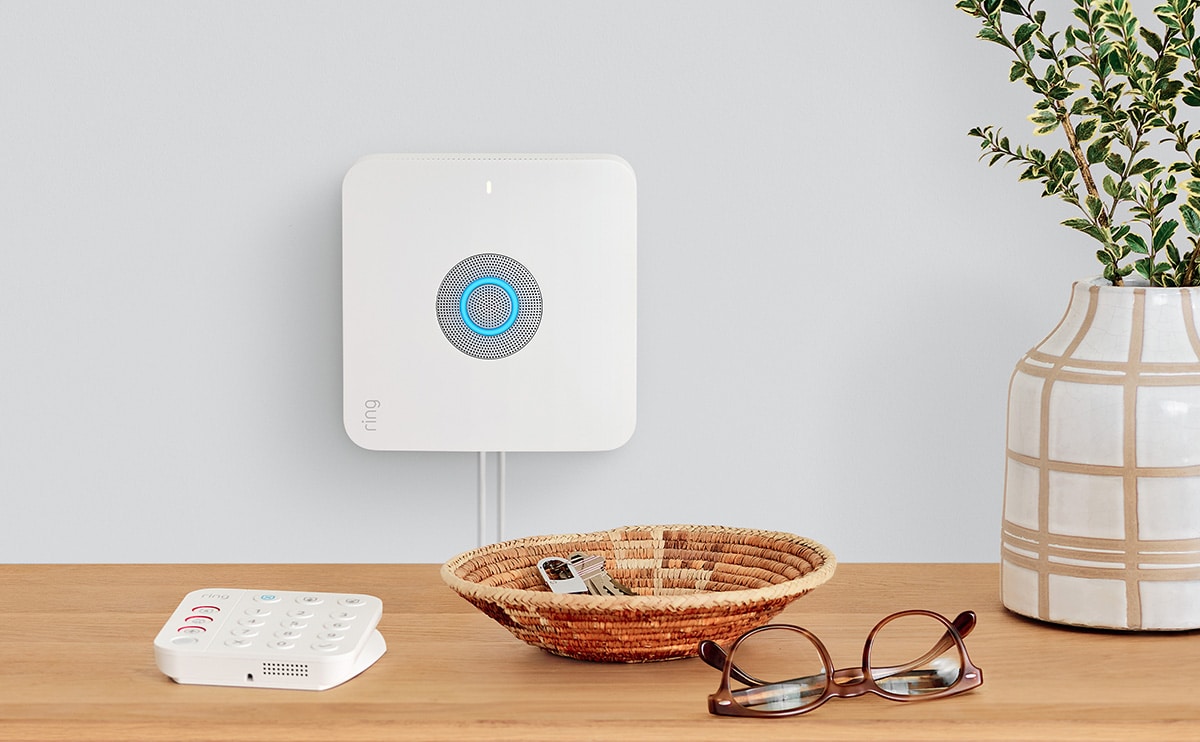
Security Cameras
Security cameras let you see what’s happening inside and outside your home. You can buy wired or wireless security cameras. Most indoor security cameras include speakers and microphones for two-way audio between you and whomever the camera is recording. Typically more expensive than indoor cameras, outdoor cameras are designed to withstand harsh temperatures, rain, and other environmental concerns. Security cameras usually store video content on the cloud so you can save and watch footage remotely.
Doorbell Cameras
As their name suggests, doorbell cameras are doorbells equipped with a small video camera. Doorbell cameras let you see who’s at your door, even when you’re away. Most video doorbells are weather resistant and include night vision and two-way talk. Video doorbells will alert you via smartphone when someone’s at your door and allow you to view live video or record motion.
Security Sensors
As one of the critical components of a home security system, most starter kits come with a selection of sensors, with both wired and wireless options available:
- Contact Sensor: People often place contact sensors on windows and doors on the ground floor of a home. The contact sensor comprises a magnetic piece and a sensor body. The magnetic part connects to the door or window, while the sensor body connects to the door or window jamb. Together, they create a magnetic field that, when disrupted—such as a door being opened—causes the sensor to signal the control panel to trigger an alert.
You can also use contact sensors for drawers and cabinets. Attach a contact sensor to a jewelry box, medicine cabinet, safe, or mailbox. You’ll receive a real-time alert when the sensor is triggered.
- Motion Sensor: Motion sensors detect movement within a set radius. The quality of motion sensors can significantly vary, with some motion sensors catching any activity at all vs. motion sensors that distinguish between people and pets. Some motion sensors allow you to adjust the sensitivity, making it easier to see significant motions. Some use motion sensors to protect specific items in the home, such as expensive artwork.
- Glass Break Sensor: Glass break sensors detect the frequency of glass breaking. Setting off a glass break sensor will cause a siren to sound, which is great for scaring off would-be intruders. Some glass break sensors are equipped with blinking indicator lights to scare away potential burglars before they try to break the glass.
Glass break sensors are available as components of a full security system or as standalone equipment. As part of a home security kit, glass break sensors use small microphones to hear glass breaking and send this information to the base station to trigger the alarm. Standalone sensors, like those featured in our best glass break sensor review, are classified as “vibration sensors.” Vibration sensors sound when they detect physical vibrations on the window and emit an alarm.
- Garage Door Sensor: Garage door sensors work like contact sensors. Garage door sensors allow for a larger gap between a magnet and the sensor body to eliminate the chance of a false alarm.
A garage door sensor is one of many ways to secure your garage. You can also purchase exterior door locks, window coverings, garage door openers, security cameras, and garage security systems. Consider these five essential steps for garage security.
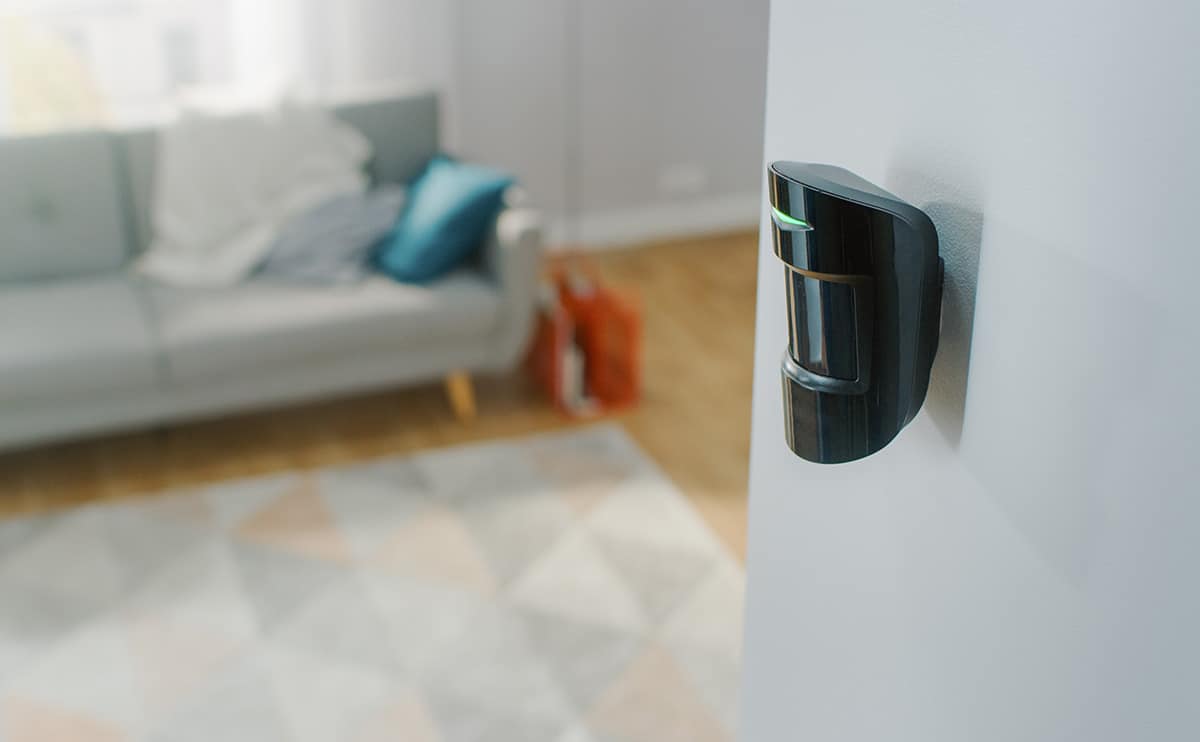
Environmental Sensors
Most environmental sensors will be optional add-ons to your security system. These sensors protect you from dangerous changes in your home’s environment:
- Flood Sensor: Place flood sensors anywhere where flooding could happen—in the basement, near the washing machine, or in bathrooms. With the national average cost of water damage repair at $3,250 (ranging between $1,270 and $5,376), flood sensors could save you a considerable chunk of change in the long run.
- Fire Sensor: Why would you need a fire sensor if you already have smoke detectors? As part of your security system, a fire sensor will notify you via the mobile app when dangerous temperatures or smoke are detected, allowing you to call the fire department quicker. If you have a professional monitoring contract, support will be dispatched immediately, saving you and your home from severe damage.
- Carbon Monoxide Sensor: Tasteless, odorless, and invisible to the naked eye, carbon monoxide is a dangerous gas that is fatal in large enough doses. Today’s smoke detectors often include a CO monitor; however, we recommend getting a carbon monoxide sensor that’s Wi-Fi connected to receive notifications no matter your location. We like Google’s Nest Protect Wi-Fi-enabled smoke and CO alarm.
Alarms & Sirens
Customize your alarm system with additional alarms and sirens. Typically, this equipment isn’t included in a security system starter kit but instead is an optional add-on:
- Panic Button: When pressed, a panic button sounds an alarm or requests emergency support. Panic buttons work with a 24/7 professional monitoring service. After pressing the panic button, emergency responders immediately come to your aid.
- Medical Alert Wearables: Medical alert wearables can be helpful for seniors who live alone, people with epilepsy or other health conditions, or anyone who cannot communicate well with 911 dispatch. There are various medical alert wearables on the market: watches, pendants, keychains, and belt clips. Many wearable devices offer fall detection to recognize movement (falling) and automatically trigger a call for help. Others include GPS connectivity, allowing others to track the wearable via a smartphone app. Get our picks for the best medical alert systems on the market today.
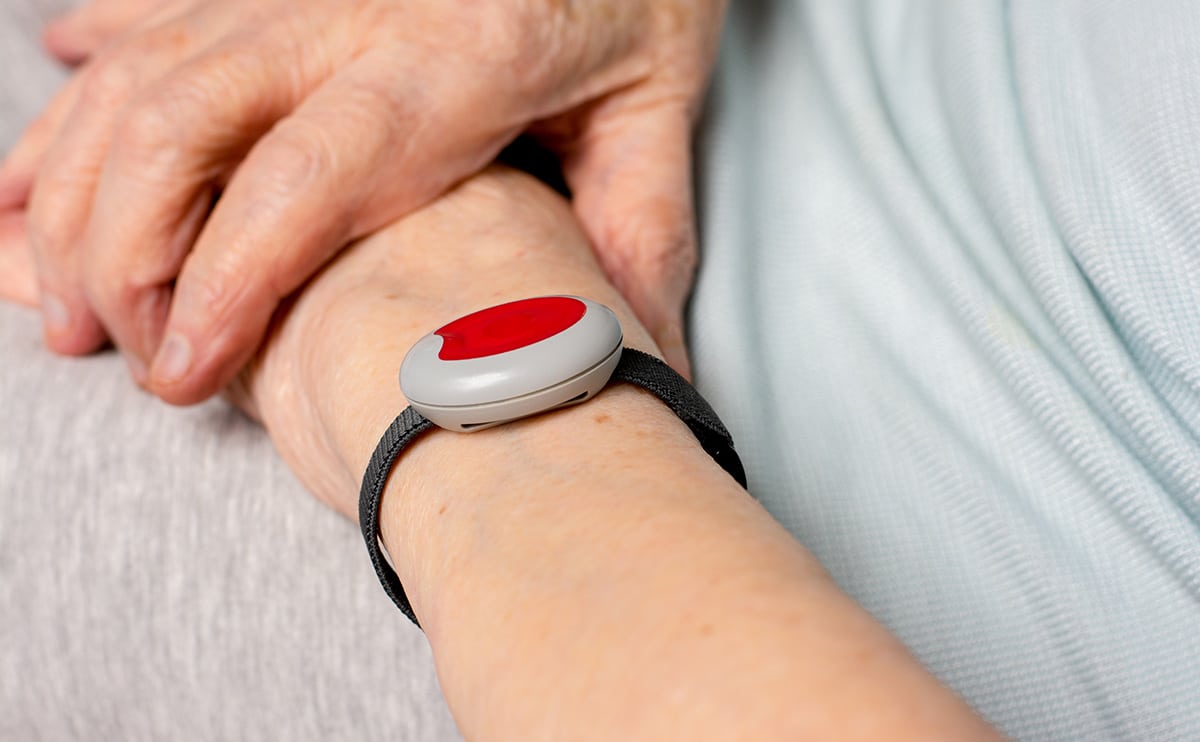
Car Cameras
Car cameras are another tool for protecting your home and community. Cameras like the Ring Car Cam detect and record activity around your vehicle, from doors opening, attempted break-ins, theft, impacts, and other events inside and near your car.
Monitoring
Home security systems allow you to monitor your house, even when away from home. When selecting a home security system, there are two routes to take:
- Self-monitoring: With self-monitoring options, you are responsible for your home’s security via the corresponding mobile app. You’ll get a notification that your alarm went off. Then, it’s up to you to check the live stream to see what’s happening at home. From there, you can decide to call the proper authorities if needed.
Self-monitoring is a great way to keep track of pets or family members throughout the day. Get notified that your kids made it home safely from school. Or, watch a live stream of your dog during your lunch break. Check out our top picks for security systems for pet owners.
- Professionally-Monitored Options: While professional monitoring was once included in every home security system, today it’s usually an optional add-on to self-monitoring. How does it work? Professional monitoring means a team of real people working at monitoring centers can answer your alarm along with you. Your team will verify if emergency service is needed and dispatch help.
We recommend professional monitoring for added protection, giving you support while you’re sleeping, in a meeting, away on vacation, and more.
Home Automation
If you’re a 90’s kid like me, you were undoubtedly obsessed with the concept of home automation after seeing the Disney Channel Original Movie “Smart House.”
Long Before Alexa…There was PAT (Video)
Long before Alexa or Google Assistant, there was PAT: Personal Applied Technology. PAT was the artificial intelligence at the core of “Smart House” and introduced watchers to the concept of a highly intelligent home. While a system as smart as PAT is still far off, we can now control lighting, thermostats, locks, and more through home automation. Home security systems with smart home integration are worth looking into if you like the idea of hands-free technology.
Components
- Smart Assistant Integrations: Connect your home security system to a smart home device like Amazon’s Alexa or Google’s Google Assistant to control your system through voice alone.
- Lighting Control: Control smart lights through mobile apps or voice commands. Set your smart lights to turn on only when there’s motion. Or, have your lights turn on as you get closer to home through a process called geofencing.
We like to use smart lights when we’re away from home to deter burglars. Some systems offer “away mode,” meaning that lights turn on and off randomly during the day, giving the impression that someone is home.
- Smart Locks: With smart locks, there’s no need to unlock your door manually. Do you have a friend coming over, but your hands are busy? Use a voice command to unlock your door. Many smart locks give entry access during specific periods. This means there’s no need to leave a key under the mat. Is the neighbor stopping by to feed your pet while you’re on vacation? Use a temporary passcode to grant guest access without risking your home’s security.
- Smart Plugs: Smart plugs allow you to remotely control any electrical device in your home via an app or voice control. You can also create schedules or triggers, saving you money in electrical costs and offering additional home security benefits. Like smart lights, use your smart plug to schedule a lamp to turn on throughout the day to deter intruders.
- Smart Thermostats: Alter your home’s temperature through the app, voice assistant, or automated scheduling.
What is geofencing? Think of geofencing as a virtual perimeter around your home. When geofencing is enabled through your smart home platform, you can select a radius around your home, accessed through your smartphone. After setting a perimeter, you can set alerts and rules that will be triggered when your phone crosses the geofence boundary. Whenever your smartphone crosses the virtual boundary, your home’s base station will command devices to perform a specific action that you selected. With geofencing, arriving home from work means that the garage door is opening, your doors are unlocked, the lights are on, and the temperature is adjusted.
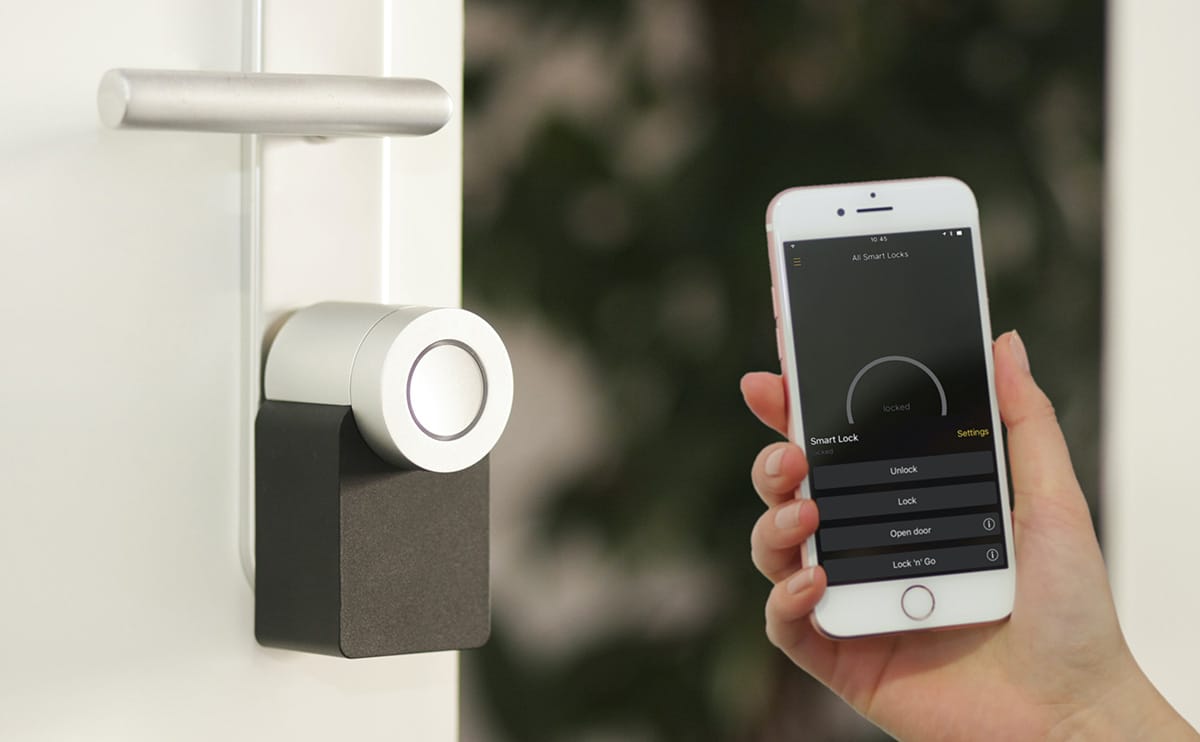
Are Home Security Systems Effective?
According to the Federal Bureau of Investigation (FBI) via its National Incident-Based Reporting System (NIBRS), 2021 saw 616,307 burglary incidents in the United States. Of these incidents, 61 percent occurred in residential homes. For many, home security systems provide peace of mind while you’re away—and for good reason—making them worth their weight in gold. A 2016 burglary victimization survey found that the most common time for residential burglaries was between 12 p.m. and 4 p.m.
We know that we’ve seen an increase in home security, and a 2019 FBI study shows a decrease in burglaries across the United States. Are home security systems to thank? Research says there’s a correlation between the two. A five-year study by researchers at Rutgers University credits residential alarm systems with decreased burglaries and overall crime rates. Another study at UNC Charlotte gathered responses from more than 400 convicted burglars to better understand an intruder’s methods. Approximately 83 percent of respondents said they would first try to determine if a home had an alarm system, with most moving to an easier target if an alarm was discovered.
Do I Need A Home Security System?
Are home security systems worth it? While most home security companies offer scalable systems for various home sizes, you may be wondering if you need a home security system in the first place. According to the U.S. Bureau of Justice Statistics, home type and household member demographic play a role in burglary.
7 Burglary Stats You Have To Read To Believe
- Married couples without children experience the lowest rates of burglary.
- Single males were likelier to experience burglary than single women when no one was home. Genders experienced equal burglarizing if someone was home.
- The most vulnerable homes are those of single females with children. Households of single women with children had the highest burglary rate while someone was home.
- Residences with American Indians or Alaska Natives experience higher burglary rates than any other race.
- Burglaries were most common when the head of the household was under 19 years old. Burglary rates decline in homes where residents are 65 or older.
- Burglaries happen more to renters than homeowners. Those living in hotels, motels, or rooming houses have the highest risk of burglary, followed by mobile homes and then houses and apartments.
- Low-income homes experience higher rates of burglary.
We’ve compiled a guide to help you choose the right home security system for your home.
Top 3 Benefits Of A Home Security System
We know that having a home security system can deter burglars, but let’s consider all the benefits of a home security system:
- Safety: Home security systems help keep intruders out of your home and can improve response times for those needing emergency support. Some home security systems also provide alerts when smoke alarms or carbon monoxide detectors go off.
- Prevent Crime: Yard signs, outdoor cameras, and alarms can deter burglars. If your house is burglarized, indoor cameras can catch the thief in the act, providing additional evidence to police.
- Discounts On Home Insurance: In many cases, a home security system can lead to discounts on home insurance.
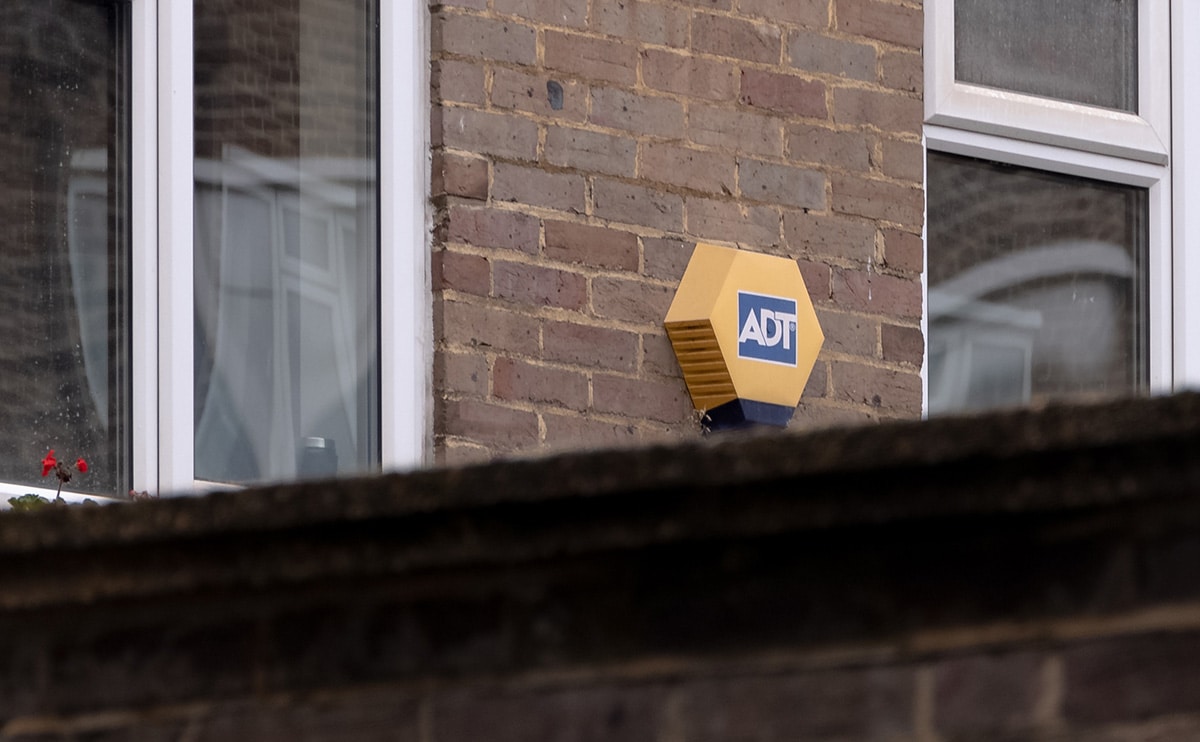
Top 3 Drawbacks Of A Home Security System
No home security system is perfect. Consider these drawbacks to having a home security system:
- Cost: Security systems can be costly. Consider starting with basic security equipment if a full system is too expensive. A basic burglar alarm can cost as low as $20.
- False Alarms: False alarms can happen and can cause unneeded stress.
- Privacy Issues: While security cameras are effective at catching threats, they can create a lack of privacy for anyone in their line of vision.
Frequently Asked Questions
How Much Does A Home Security System Cost?
The cost of a home security system will depend on equipment, installation, and monitoring choices.
Can I Install My Own DIY Security System?
Absolutely. DIY installations save you the cost of professional installation (typically around $100). Wireless systems are easier to set up for those taking the DIY approach. Most DIY systems include step-by-step instructions for installation, costing you only the time it takes for setup. If you’re looking to save on costs, DIY home security systems are worth looking into.
What Is The Best Home Security System?
Have you decided that home security systems are worth it, and you’re ready to purchase your first one? Consider the level of security needed, home size, location, and cost to pick the best home security system for your needs. Fortunately, most companies offer packages to meet any budget. Our experts reviewed the leading 16 home security companies and picked our favorites. Review the best home security systems for this year.
